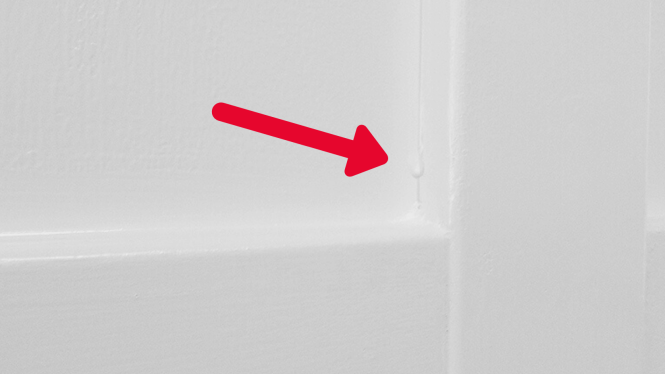

No More Paint Drips Here! This comprehensive guide will equip you with the knowledge and techniques to banish paint drips, ensuring a professional and flawless finish on your next painting project. Whether you’re a seasoned painter or a novice, this guide will address common painting mistakes, provide solutions, and showcase strategies to minimize paint drips. We’ll delve into the reasons behind paint drips, explore various preventative measures, and discuss efficient cleanup methods. Ready to transform your painting endeavors? Let’s dive in!
Understanding the Causes of Paint Drips
Paint drips, a common frustration for DIY enthusiasts and seasoned professionals alike, are often the result of several interrelated factors. Understanding these factors is crucial to developing effective solutions. A fundamental cause stems from improper preparation of the surface to be painted, leading to uneven absorption of paint. Also, inadequate stirring of the paint before application can result in uneven consistency, contributing to drips. Using the wrong type of brush or roller for the task can also create problems. Additionally, incorrect paint application techniques such as insufficient pressure or incorrect angles can cause drips and streaks.
Choosing the Right Equipment for a Drip-Free Finish
The selection of suitable painting tools plays a pivotal role in minimizing drips. Using the proper tools can significantly impact the final outcome, leading to a professional finish with minimal effort. Selecting the right brush or roller type, keeping in mind the surface texture and type of paint, is essential. For example, using a wide, angled brush for larger surfaces might result in drips compared to using a thinner, more controlled brush for smaller, detailed areas. Another key element is selecting paint that’s appropriate for the climate and conditions. In hot, dry conditions, some paints can become too thick and prone to dripping, so choosing the correct paint viscosity is critical to achieve the best results.
Mastering Effective Painting Techniques
Beyond choosing the right equipment, mastering the appropriate painting techniques is crucial for preventing drips. A critical aspect involves proper paint application. Applying paint in thin, even coats rather than thick layers can dramatically reduce the risk of drips. Applying paint in the same direction each time helps to promote even coverage and prevent unevenness. Start painting in one area and move towards another area, ensuring every section is covered. A common mistake is moving back and forth too much. If you must move, do so in a direction that is consistent with the previous coverage.
Preventing Paint Drips with Preparation and Practice
The preparation phase is pivotal to preventing paint drips. Thorough surface preparation involves cleaning and filling any imperfections or holes that may impede paint adhesion. Removing old paint, debris, dust, and ensuring a smooth, primed surface is paramount. Properly prepping the surface helps ensure even paint application. Ensuring the tools and materials are in good condition can greatly impact the effectiveness of the painting process. Finally, consistent practice and repetition of these methods can dramatically improve accuracy and efficiency.
Cleanup Strategies for Paint Drips
Addressing paint drips promptly is essential for maintaining a pristine appearance. Prompt cleanup is vital to avoiding more significant problems. If caught early, paint drips can be cleaned with a damp cloth or paper towel. For more persistent drips, you can use a scraper, and for larger projects consider a paint scraper or putty knife. These tools should be used carefully to avoid damaging the surrounding area. Knowing the right tools to use depends on the type of surface. Wooden surfaces require different handling than walls or metal surfaces.
In conclusion, eliminating paint drips is achievable with the right tools and techniques. By understanding the common causes, implementing preventative measures, and mastering effective cleanup methods, you can enjoy a pristine painting experience. If you’re still unsure about any aspect, consult a professional painter or refer to reliable online resources for further guidance. Remember, a little proactive effort can prevent a lot of frustration and wasted time! Ready to banish paint drips forever? Visit [website link] for detailed instructions and resources.